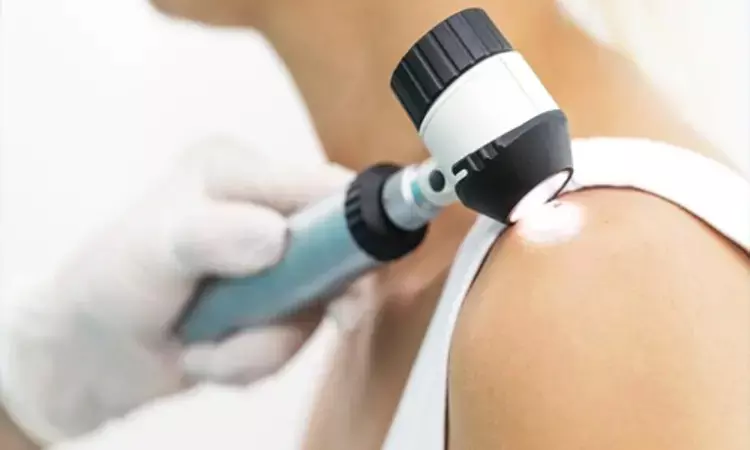- Home
- Medical news & Guidelines
- Anesthesiology
- Cardiology and CTVS
- Critical Care
- Dentistry
- Dermatology
- Diabetes and Endocrinology
- ENT
- Gastroenterology
- Medicine
- Nephrology
- Neurology
- Obstretics-Gynaecology
- Oncology
- Ophthalmology
- Orthopaedics
- Pediatrics-Neonatology
- Psychiatry
- Pulmonology
- Radiology
- Surgery
- Urology
- Laboratory Medicine
- Diet
- Nursing
- Paramedical
- Physiotherapy
- Health news
- Fact Check
- Bone Health Fact Check
- Brain Health Fact Check
- Cancer Related Fact Check
- Child Care Fact Check
- Dental and oral health fact check
- Diabetes and metabolic health fact check
- Diet and Nutrition Fact Check
- Eye and ENT Care Fact Check
- Fitness fact check
- Gut health fact check
- Heart health fact check
- Kidney health fact check
- Medical education fact check
- Men's health fact check
- Respiratory fact check
- Skin and hair care fact check
- Vaccine and Immunization fact check
- Women's health fact check
- AYUSH
- State News
- Andaman and Nicobar Islands
- Andhra Pradesh
- Arunachal Pradesh
- Assam
- Bihar
- Chandigarh
- Chattisgarh
- Dadra and Nagar Haveli
- Daman and Diu
- Delhi
- Goa
- Gujarat
- Haryana
- Himachal Pradesh
- Jammu & Kashmir
- Jharkhand
- Karnataka
- Kerala
- Ladakh
- Lakshadweep
- Madhya Pradesh
- Maharashtra
- Manipur
- Meghalaya
- Mizoram
- Nagaland
- Odisha
- Puducherry
- Punjab
- Rajasthan
- Sikkim
- Tamil Nadu
- Telangana
- Tripura
- Uttar Pradesh
- Uttrakhand
- West Bengal
- Medical Education
- Industry
Researchers discover demodicidosis as under-recognized cause of facial hyperpigmentation

Israel: Hana Feuerman and colleagues published novel research that identified unusual clinicopathological and dermoscopic findings related to an under-recognized kind of face hyperpigmentation induced by demodex, which they call "pigmented demodicidosis." The findings of this study were published in the International Journal of Dermatology on 13th December 2021.
The Demodex mite is an obligate human ectoparasite that lives in or near the pilo-sebaceous units. Demodex folliculorum and Demodex brevis are two species that commonly attack people. Demodex infestations are often asymptomatic, and they may play a pathogenic function only when present in large densities and due to immunological imbalance.
There is a scarcity of information on demodicidosis-related face hyperpigmentation. The goal of this study was to define the clinical, dermoscopic, and histopathologic aspects of demodicidosis-associated face hyperpigmentation.
For this study, clinical and diagnostic data were acquired from the medical files of the patients who were referred to outpatient dermatology clinics for assessment of face hyperpigmentation and were diagnosed with demodicidosis between 2006 and 2019.
The results stated as follows:
1. The cohort included 19 patients (13 men) ranging in age from 42 to 76 years, all of whom had Fitzpatrick skin types 3-4.
2. All had generally asymptomatic dark, brown-gray facial pigmentation, either localized or diffuse, with background erythema in 36.8% of cases and skin roughness in 26.3% of cases.
3. Dermoscopy revealed white gelatinous or opaque protrusions from hair follicles, as well as amorphous material infiltrating follicular apertures.
4. Perifollicular and reticulated pigmentation of the afflicted regions was a particular observation.
5. Microscopic (n = 7) and histopathologic (n = 5) examinations validated the findings. Within two years, anti-demodectic medication resulted in total (73.6%) or partial (23.4%) clearance of pigmentation.
In conclusion, with the findings described in the above study this unique condition "pigmented demodicidosis" should be considered as a possible cause of face hyperpigmentation and added to the list of possible causative agents for facial hyperpigmentation.
Reference:
Feuerman H, Atzmony L, Glick M, Sherman S, Snast I, Hodak E, Segal R. Pigmented demodicidosis - an under-recognized cause of facial hyperpigmentation. Int J Dermatol. 2021 Dec 13. doi:10.1111/ijd.15992. Epub ahead of print. PMID: 34897670.
Medical Dialogues consists of a team of passionate medical/scientific writers, led by doctors and healthcare researchers. Our team efforts to bring you updated and timely news about the important happenings of the medical and healthcare sector. Our editorial team can be reached at editorial@medicaldialogues.in.
Dr Kamal Kant Kohli-MBBS, DTCD- a chest specialist with more than 30 years of practice and a flair for writing clinical articles, Dr Kamal Kant Kohli joined Medical Dialogues as a Chief Editor of Medical News. Besides writing articles, as an editor, he proofreads and verifies all the medical content published on Medical Dialogues including those coming from journals, studies,medical conferences,guidelines etc. Email: drkohli@medicaldialogues.in. Contact no. 011-43720751


